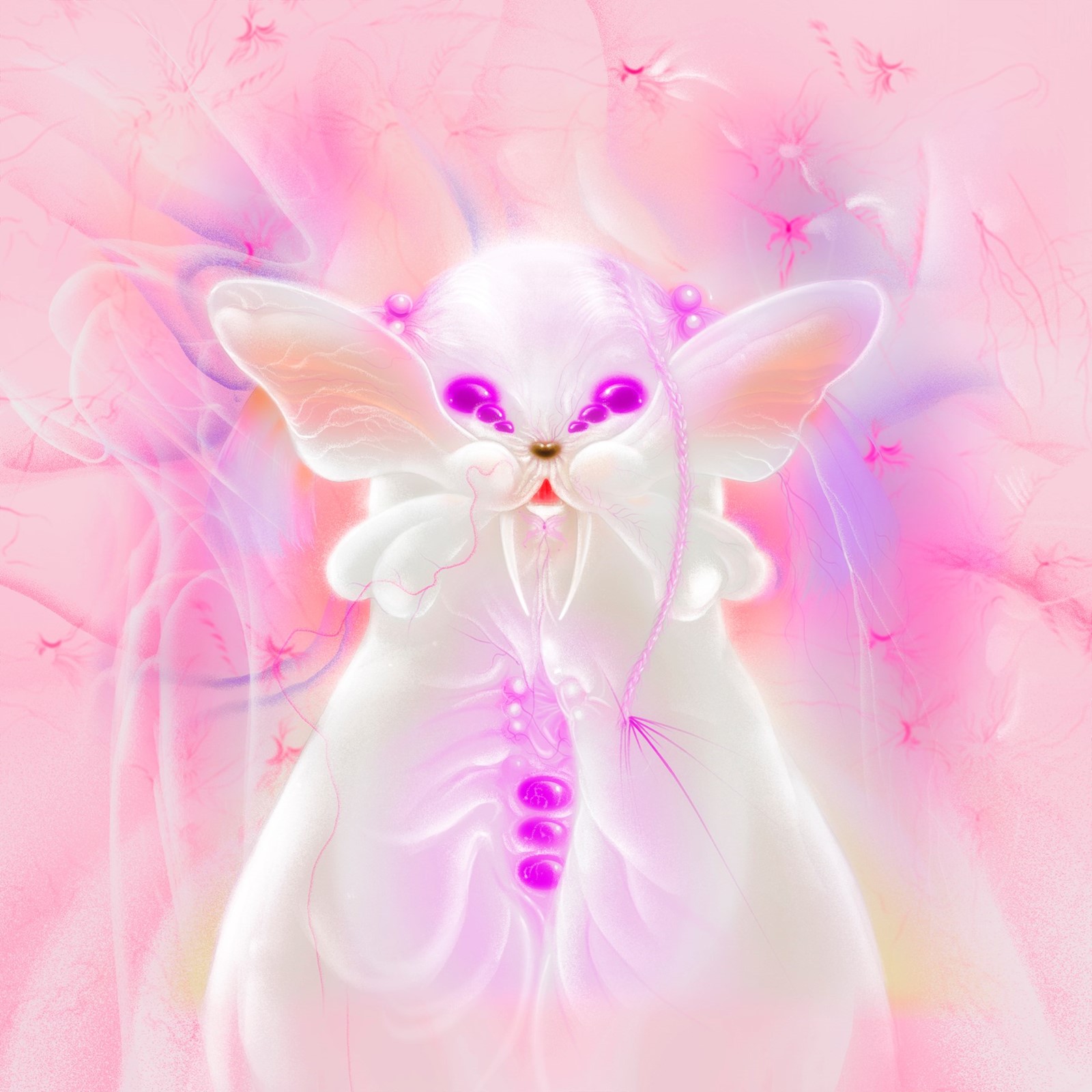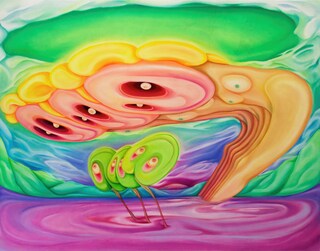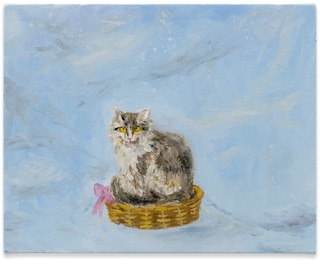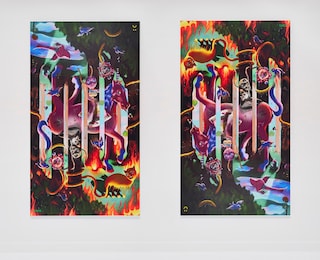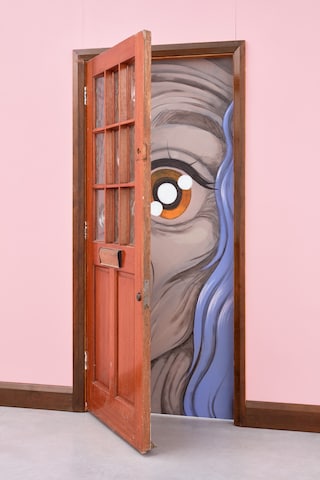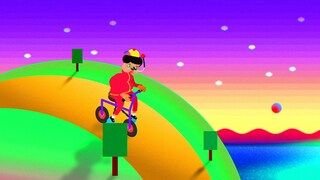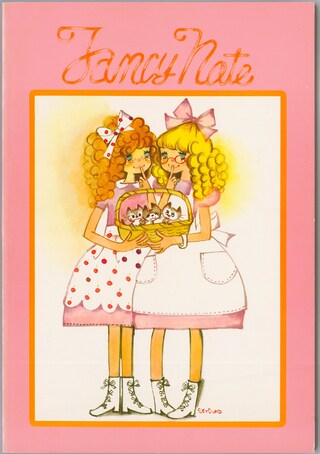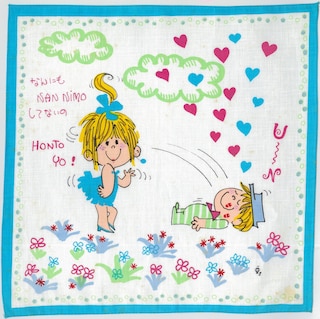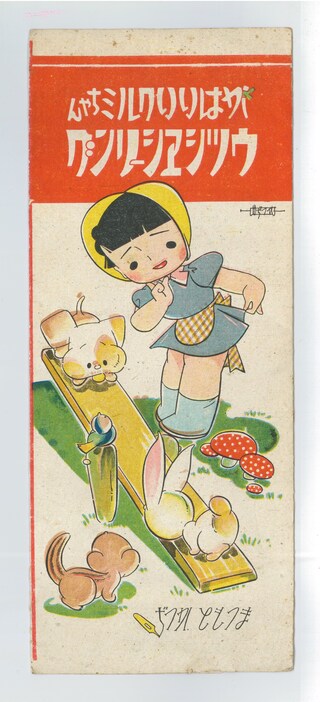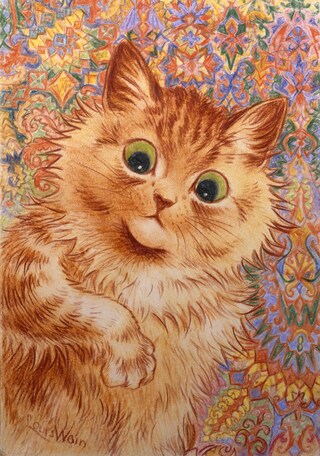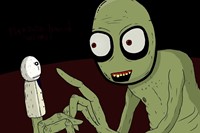From emojis to coquettes and Hello Kitty, cute’s transformative potential is shaping how we see ourselves both on and off-screen
When Tim Berners-Lee, the inventor of the World Wide Web, was asked in 2014 to name one use of the internet that he didn’t anticipate, he answered with a single word: kittens. It’s true, kittens are everywhere online, and so is cute.
From ASCI art or early memes like Caramella Girls and Nyan Cat, cute aesthetics have existed online forever, though it’s only in recent years that cuteness has entered mainstream discourse, through major exhibitions, book releases and high-profile fashion drops, becoming one of the dominant aesthetics across our hypermediated digital landscape. Scroll down your feed and it’ll become increasingly apparent that the Cute Industrial Complex pervades almost every aspect of online experience with a googly-eyed contagion. Think: catboys, coquettes, E-girl warfare, uwu-ified filters, internet-born music, make-up and memes with baby animals and captions like, ‘this is who you’re being mean to’. All this is compounded in Somerset House's new exhibition, Cute, which puts it: “There is no doubt that the internet is cute’s 21st-century engine.”
There are many reasons why the internet is such fertile ground for cuteness. At its most basic, “we live in un-cute times,” suggests Maya Kronic, co-author of the new book Cute Accelerationism. In an era of worsening economic inequality, climate crisis and war, there are plenty of reasons why young people are gravitating towards cuteness. These are the same conditions that saw an onrush of Y2K nostalgia during the pandemic, when we collectively cast our minds back to a simpler, childlike era to distract from the doomscroll (bad news, censorship, culture wars) through Sanrio plushies and Marc Jacobs Heaven drops.
But there’s more to cuteness than simply the desire to tap out of reality. To understand it, we must look beyond its ultra-smooth shiny surface, cracking it open to reveal the soft power dynamics at its core. “It’s quite hard to appreciate cute without eventually wanting to become cute,” explains Kronic. “And this cute process we see at work in all kinds of transformative ways on the internet.”
The cuter the pill the easier it is to swallow – like how the ‘brrp’ at the end of TikTok videos makes you feel all warm and fuzzy. There’s even a term that describes the role cuteness plays in shaping a user’s behaviour: kawaii kapitalism, referencing the culture of cuteness native to Japan. This is of course nothing new – cuteness has been used to sell products for as long as capitalism itself, though it’s in Japan’s post-war period, through the mass production of toys, manga and ephemera, that cuteness really took hold.
On our screens, cuteness is the preferred method of communication for a generation of young people brought up online, who saturate their feeds with squishy images that seep through social media in an endless cycle of cute consumption: avatars, bitmojis, emojis, memes. As everyday life inches towards the digital, everything we do is gamified – from dating, employment, skill-learning, and even sleep, rewarding us with XYZ. These apps – like Duolingo and Pokémon Sleep – might reward us for sustaining healthy habits, but it’s their cute aesthetics that keep us craving more.
“It’s quite hard to appreciate cute without eventually wanting to become cute” – Maya Kronic
Nowadays, we are all content creators slurping cash rewards through online engagement via sparkly emojis and virtual treats. It’s no secret that everything we do on social media is monetised, from the pictures we post to the friends and locations we engage with. The Attention Economy rewards those who the machine sees as desirable – think TikTok face and the tyranny of algorithmic micro-trends. The same applies to cuteness: the cuter you are, the more sellable! This is particularly true across social media, where most of us cutify ourselves and images of ourselves through anime avatars and bitmojis and face filters that smooth our skin and enlarge our eyes to make us appear all round-faced and innocent. Its magic formula tugs on your heartstrings, passing cute transmissions from user to user, through likes, swipes, shares, reposts.
Cute allows us to play with what’s real and what’s fake. Given how we interact with ourselves and each other online, through 2D and cartoonified versions of ourselves, cuteness shapes how we understand our identity both on and off-screen. To put it simply, the internet is changing how we see ourselves and our bodies, transforming us into part-human, part-digital entities that inhabit a world where the boundaries between the real and the virtual are constantly blurred. Think of MSCHF’s viral Astroboy Boots (inspired by the manga) or Loewe’s pixelated SS23 collection (both feature in the Somerset House exhibition). Or uncanny valley make-up and Dr Kim’s bizarre plastic surgery, which makes patients look like something in between a cyborg and a toy animal.
In our hyper-mediated digital world, where it costs less to stay in and play video games with your friends than go out clubbing, it makes sense that our real identities are being moulded by the virtual. “Cuteness is a feedback loop between the fictional and the real that dissolves the distinction altogether,” explains Amy Ireland, co-author of Cute Accelerationism. Syncing up the virtual to the material world, cuteness is like a digital skin that allows your avatar to experience new fantasy realms. Just as the internet is innately psychedelic, it’s through cute’s altered state that we can dream up new and imagined realities, giving us a visual language to express our hyper-synthetic desires – whether that’s turning yourself into an animal with cat paws or a moe videogame character.
This is particularly useful when exploring ideas of gender, where cute’s plasticity allows for greater freedom to go beyond the binaries, like how catboys subvert gender by donning cat ears and maid outfits. As I wrote back in an earlier piece, “The catboy’s very existence is genderfluid and unclassifiable. It rejects the binary categories of man and woman – and, by extension, subverts the framework on which society functions.” Similarly, furry fandoms – a favourite talking point among right-wing politicians – allow for similar explorations of gender identity – it’s unsurprising that a large number of furries identify as LGBTQ+.
“Cuteness is a feedback loop between the fictional and the real that dissolves the distinction altogether” – Amy Ireland
”Cuteness can operate as a kind of giving permission and licence for you to explore your map of your own body and the way that you appear to others and yourself,” agrees Ireland. “Instead of producing yourself as a particular gendered person, you’re picking from this database of little bits and pieces, rearranging them until you find a way that they fit with your identity and your body and the way you present yourself to make this new character.” These elements don’t necessarily have to be human either, they can be animal or machine. “They cross like all of these different realms, so it’s not just breaking down binary gender, but actually transporting us into this weird post-human world, where gender is just broken into fragments that are not even human-coded fragments anymore.”
There’s a reason cuteness is the girl’s weapon of choice online, too, with girl-coded trends drawing upon cute’s ability to conjure new worlds. Both appear deceptively innocent and submissive. “It serves as a carrier of worlds and stories, simultaneously powerful and disempowering, sexualising and infantilising,” agrees multidisciplinary artist and PC Music affiliate Hannah Diamond, whose work explores the relationship between girlhood and digital identity. “For example, pink’s representation as an artificial, plastic hue in today’s culture adds another layer to its symbolism and connection to the online realm, where a shapeshift must take place to exist there.”
The intoxicating presence of cuteness on our feeds will no doubt intensify as AI virtual companions strengthen our relationship to the non-human – people are already beginning to introduce their virtual relationships to IRL friends and family. There are also VR headsets like the Apple Vision Pro that literally overlay computer elements – desktop tabs and icons – onto the physical world. It’s only a matter of time until all this hits the mainstream, so while this might seem dumb or harmless at first, remember that’s cute’s trap. Our universe of synthetic objects, squashies and side characters is expanding, and no matter how trivial you think it is, you’ll always want to scroll back to the kittens.
Cute Accelerationism is out now via Urbanomic
